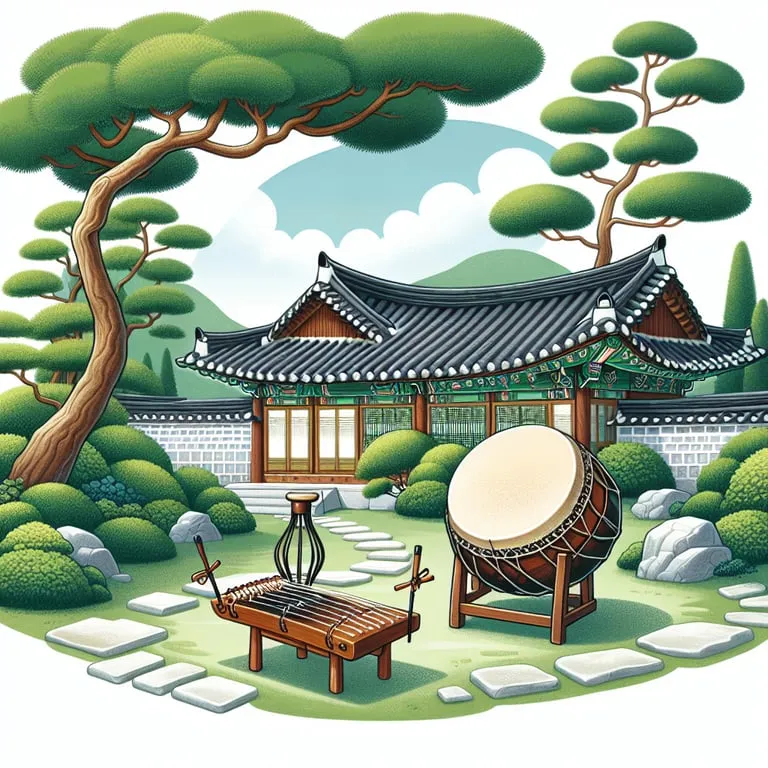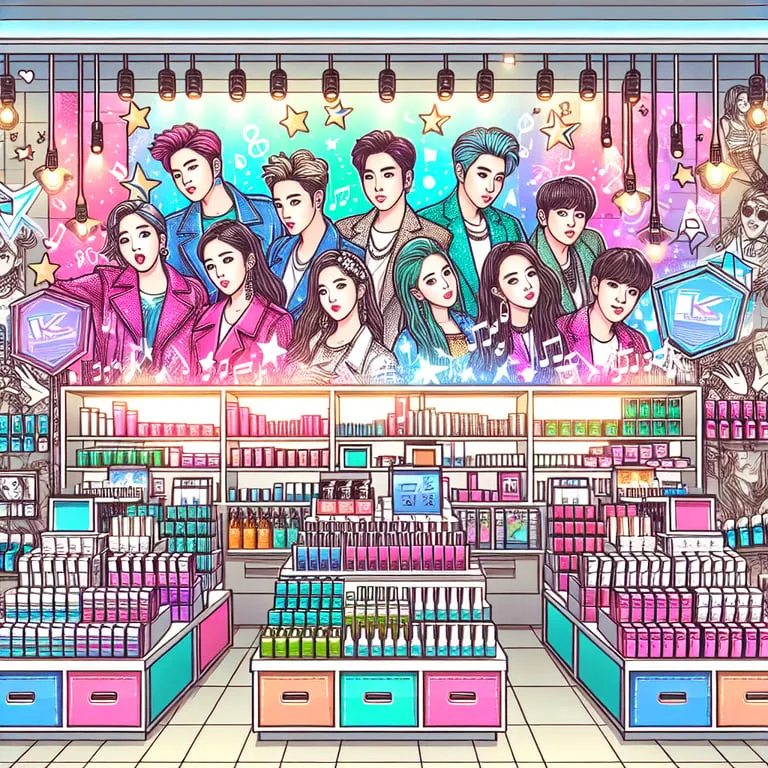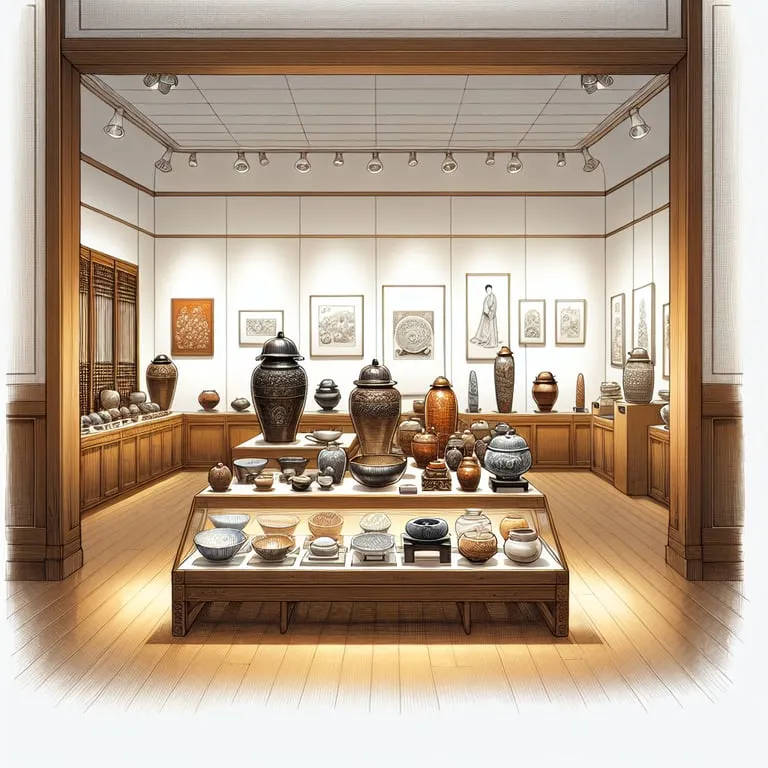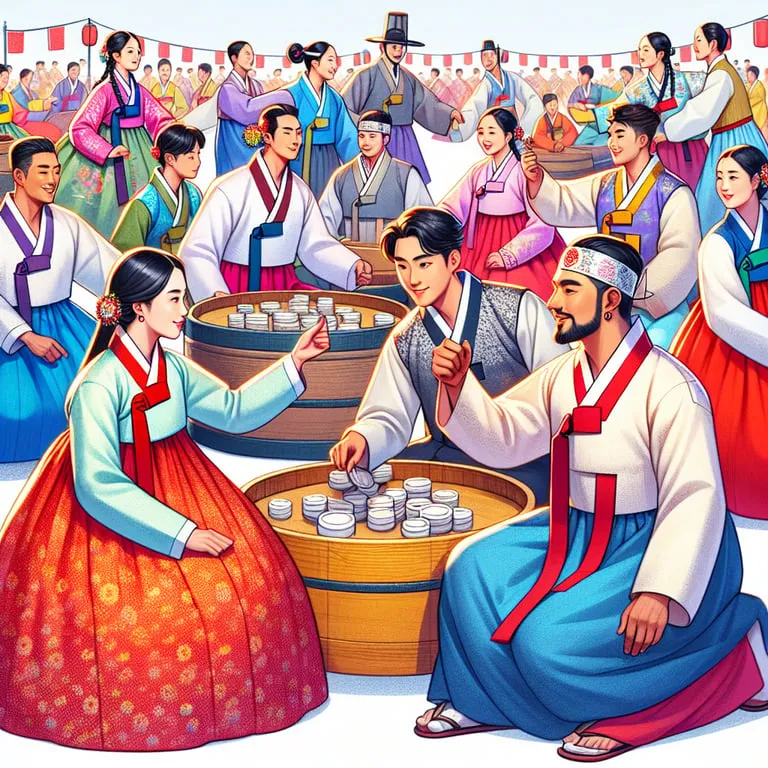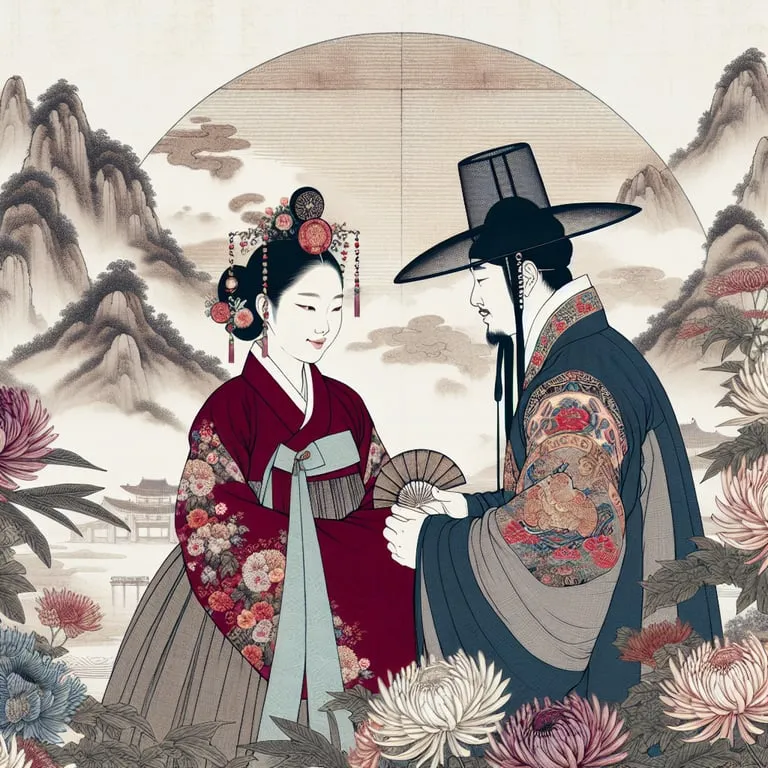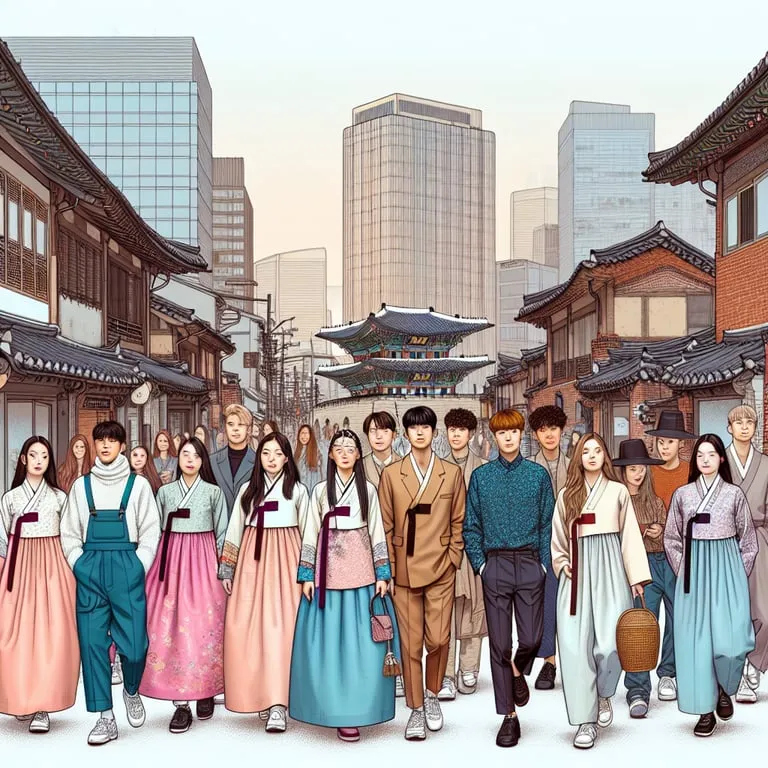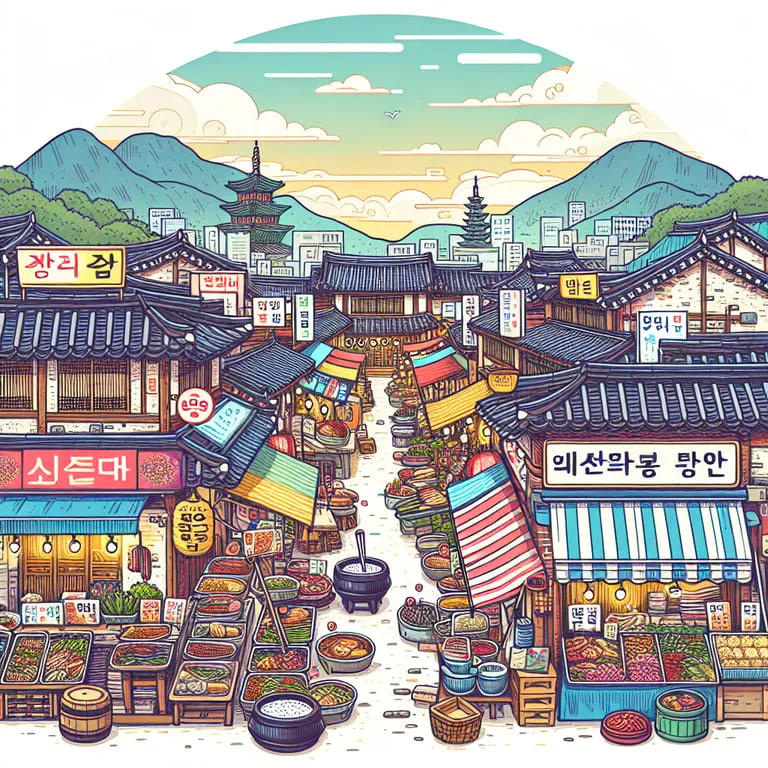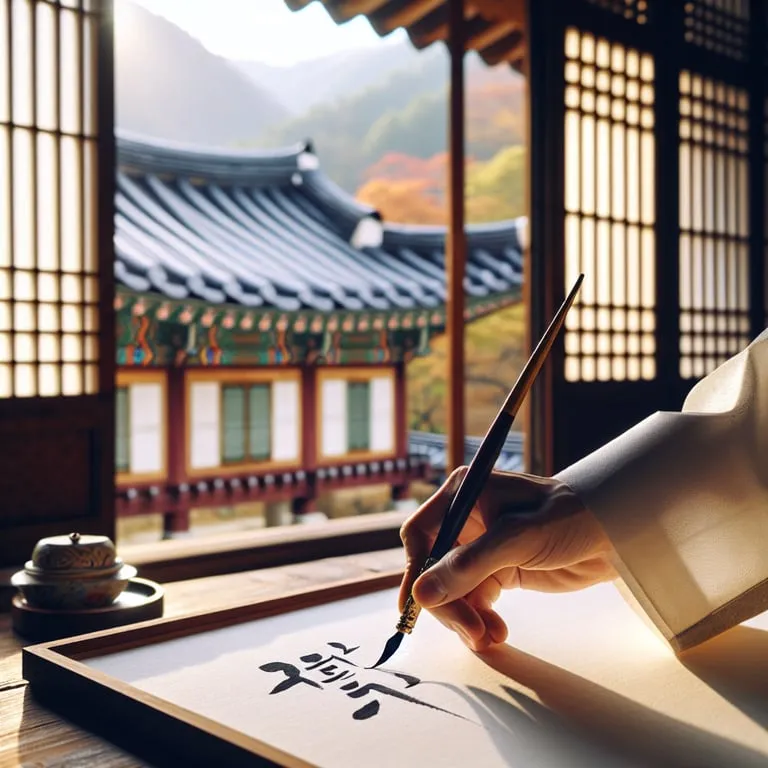Navigating the intricate landscape of Korean etiquette can be a rewarding yet challenging endeavor. Central to Korean society is a deep-rooted respect for cultural norms that permeates aspects of daily life, from honoring social hierarchies to engaging in meaningful gift-giving traditions. As globalization bridges cultures, understanding these customs becomes crucial for fostering successful interactions in both personal and professional settings. This article delves into the nuances of Korean etiquette, offering insights into the proper use of honorifics, dining manners, and more. Whether you are visiting South Korea or engaging with Korean communities abroad, mastering these etiquettes will enrich your experiences and enhance mutual respect.
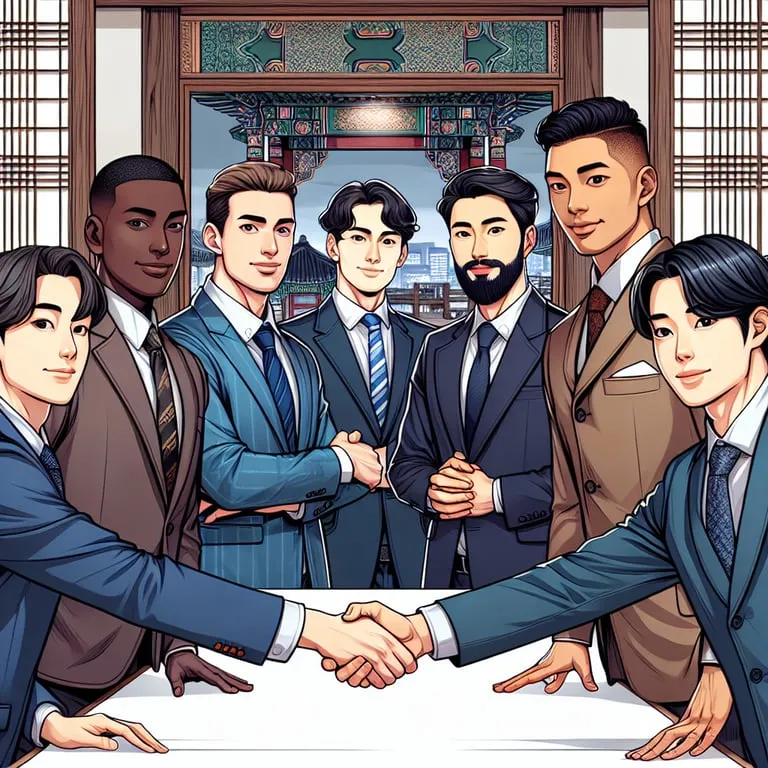
Cultural Significance of Respect in Korea
In the intricate tapestry of Korean society, respect is not just a virtue; it is the heartbeat of cultural and inter-personal interactions. The concept of “Jeong” is central, which encompasses deep feelings of affection and connection, guiding individuals on how to interact harmoniously within familial and social structures. Respect is interwoven into Korean culture with profound historical roots, dating back thousands of years. Monumental influences from Confucianism, which was introduced in Korea around 372 AD, permeate daily life and reinforce the hierarchy and social order, forming a unique societal fabric that is awe-inspiring in its execution.
Respect in Korean Language
One of the most visible manifestations of respect is in the Korean language itself. The Korean language is a multi-layered structure with varying levels of formality, dictated by the relationship between the speaker and the listener. In fact, the structure of Korean encompasses at least seven different speech levels (!!) based on honorifics and titles. The distinction between these levels indicates the level of respect and familiarity and dictates the appropriate language to employ when interacting with someone of different social standing, age, or profession. South Korea has one of the highest percentages of Confucian followers, with approximately 20% of the population actively practicing, showing the enduring influence of these historical philosophies.
Respect in Actions and Gestures
Respect in Korea extends beyond language to everyday actions and gestures. For instance, when meeting someone older or of higher status, a deep bow known as “jeol” is performed, reflecting a gesture of honor and deference. The importance of respect is further emphasized in traditional Korean families where age dictates hierarchy and seniors are highly revered. Family gatherings and ancestral rites are performed with utmost solemnity, respecting history and lineage, often taking place during significant holidays such as Seollal (Lunar New Year) and Chuseok (Harvest Festival).
Hierarchical Relationships in the Corporate World
Furthermore, hierarchical relationships extend profoundly into the corporate world. Korea’s work culture prioritizes hierarchical respect with clearly defined levels of authority and responsibility, where junior staff show deference to their seniors, reinforcing the order and discipline within the company. This respect for hierarchy is crucial, as it dictates the flow of communication and decision-making processes within businesses, often spearheaded by senior leaders who are respected figures of authority.
Balancing Modernity and Tradition
One of the most significant aspects of respect within Korean culture is the intricate balance it maintains between modernity and tradition. In a society that is rapidly advancing technologically and economically, respect serves as a steadfast anchor, preserving timeless traditions. It creates an environment of trust and mutual consideration that underpins Korean social interactions. In fact, South Korea boasts one of the highest levels of internet usage globally, with approximately 96% internet penetration by 2022, a testament to its technological advancement while preserving the values of respect rooted in its cultural ethos.
This omnipresent respect builds a community where harmony, equity, and social balance are perpetuated. As the world becomes increasingly globalized, understanding these nuances of Korean respect—balancing tradition with modernity—offers invaluable insights into establishing meaningful intercultural relationships. Respect, in the Korean context, serves as both a mirror reflecting its rich past and a lens focusing on its promising future. It frames every interaction with a warmth that transcends generations, stations, and traditions—truly the cultural cornerstone of this remarkable nation.
Proper Use of Honorifics and Titles
In the intricate tapestry of Korean culture, understanding the proper use of honorifics and titles is paramount. Language is not merely a communication tool in Korea, but a reflection of the rigid hierarchies and intricate web of social interactions that underpin society. Mastering this aspect is crucial for anyone wishing to engage respectfully and meaningfully within Korean circles, whether in personal or professional contexts.
The Subtleties of Language in Korean Hierarchies
The Korean language, known as Hangul, is unique in that it encodes social information within its very grammar. This makes understanding honorifics not just a linguistic requirement but a cultural necessity. Hangukmal, the Korean term for the language, comprises various speech levels, each with its own set of grammatical structures and vocabulary. According to linguistic studies, there are seven different speech levels, or “speech styles,” that vary based on the formality of the situation and the relationship between the speakers. The most commonly used levels are “Informal Polite” (반말) and “Formal Polite” (존댓말).
Why is this significant? In Korean society, one’s age, rank, or status nearly always dictates the speech level or the choice of vocabulary. This means that individuals must constantly evaluate their relationship with others to select the appropriate level of formality. Whew! This may sound complex, but it’s essential for maintaining harmony and respect. For instance, using the “Formal Polite” style is an expectation in professional settings, where respect and deference are a priority. In contrast, “Informal Polite” might be used among close friends or those who have granted permission for such familiarity.
Navigating Titles: Who is Who?
Titles in Korean culture go beyond the simple Mr., Mrs., or Dr., incorporating a more nuanced recognition of someone’s vocational or educational attainment and social status. In fact, a survey conducted by Korea’s National Institute of Korean Language in 2022 revealed that over 82% of Koreans find it essential to correctly use titles, as they reflect politeness and acknowledgement of the other person’s position.
Here’s how it works: occupational titles such as “Sonsaengnim” (선생님), meaning teacher, or “Seonsaeng” for doctors, lawyers, and professors, denote respect for their profession and are used irrespective of age or gender. Age plays a crucial role too! Respect towards elders is a deeply ingrained cultural value, thus even titles must reflect this reverence. A younger person addressing an older individual would typically use terms like “Oppa” (오빠) or “Hyung” (형) for older brothers or male figures, and “Unni” (언니) or “Noona” (누나) for older sisters or female figures. This extends beyond just blood relations, encompassing all older community members.
Now, let’s delve deeper: In the corporate world, titles connected to job roles are commonplace. For instance, employees refer to their bosses with titles like “Bujang-nim” (부장님) for department managers or “Daeri” (대리) for team supervisors. The suffix “-nim” (님) is appended to create a respectful address, akin to adding “Sir” or “Madam” in English while addressing someone of higher rank. Plus, remember the sobering fact shared in a study by the Seoul Business School: An overwhelming 93% of Korean corporate workers find the correct use of these titles critical for workplace communication!
In essence, titles and honorifics in Korea are more than just linguistic frills; they are an embodiment of the intricate social conventions and shared values that respect the hierarchy. Getting them right shows not only cultural literacy but also a deep respect for the people you interact with. So when navigating Korean culture, remember—words hold power beyond their immediate meanings! The difference between a warm reception and unintended offense could very well hinge on these nuanced aspects of language.
Dining Etiquette and Table Manners
In Korea, the dining table is not merely a place to satiate hunger, but a venue for displaying respect and social values. As the old Korean proverb goes, “Food is the first order of righteousness,” symbolizing the intrinsic connection between mealtime and ethics. Thus, the mastery of Korean dining etiquette is essential for anyone eager to integrate into the culture. Let us delve into the detailed customs that guide this revered practice!
The Meal
First and foremost, it is considered an absolute “must” to wait for the eldest or most senior person to begin the meal. Aging is respected, and elders are accorded the highest honor at any dining event. You might find yourself iterating, “Please, help yourself first,” somewhat frequently as you navigate the social expectations of dining in Korea. It is not just good manners; it’s a sign of reverence woven into Korea’s social fabric. Once the meal begins, remember to use chopsticks and spoons and learn to wield them with precision; always use them in tandem. The chopsticks are for kimchi and side dishes; the spoon is for rice and soup. Crossing them? Taboo! Placing them upright in a bowl? Never! Such an act is reminiscent of incense used in funerals—a consideration that drastically alters the meal’s ambiance.
Remember to keep pace with the others. Eating too quickly or too slowly can be perceived as discourteous or unaware of others’ presence. Interestingly, Koreans have a phrase “Ppalli Ppalli” (빨리빨리), symbolizing a preference for a brisk but balanced pace. However, displaying patience and allowing others to dictate the rhythm of the meal underscores respect for companions’ comfort. And as the meal concludes, discretion is required! One should not rise from their seat before the seniors have finished.
Serving Drinks
Next, let’s talk about serving drinks—an activity steeped in tradition! It’s customary to keep others’ glasses filled, especially your senior’s. When pouring, hold the bottle with both hands or support your pouring arm with your free hand—a gesture of respect and humility. Also, when receiving a drink, hold your glass with both hands, subtly turning your body away from elders. A humble bow or a nod post-acceptance is encouraged.
As you clink glasses, remember to align the rim lower than the elder’s glass. This subtlety reinforces the respectful hierarchy inherent within Korean society. One might remark, “To your health!” or “Cheers!” and smile warmly, but again, remember the measured tone of the occasion.
Seating Arrangements
Furthermore, there is a hierarchy in seating arrangements at the table, emphasizing the importance of recognizing older adults’ status. The head of the table is reserved for the eldest or the most honored guest. It conveys honor both in family gatherings and business settings. The words “Lofty” or “Esteemed” capture this practice. Such intricacies depict the nuanced realm of Korean dining etiquette, elements of which are interlaced with historical values and social decorum.
Expressing Gratitude
Finally, once the meal concludes, it is pivotal to express appreciation. A hearty “jal meogeosseumnida” (잘 먹었습니다), meaning “I have eaten well,” will go a long way in voicing gratitude for the companionship and food shared with you. This expression is essential! As laughter fills the air and conversations linger, the meal becomes a cherished memory, embodying more profound resonances of respect, unity, and cultural heritage. Such dining traditions serve not only to nourish but to fortify relationships from one generation to the next, crafting an ever-evolving tapestry of human connection interlaced with time-honored customs.
Indeed, Korean dining etiquette and table manners are a testament to the rich tapestry of cultural beliefs and the respect-driven values that root this vibrant society. Abiding by these etiquettes and understanding their significance can offer one invaluable insight and acceptance into Korean social circles, enhancing mutual respect and cultural appreciation.
Gift-Giving Traditions and Practices
In the vibrant tapestry of Korean culture, gift-giving stands as a pivotal element that symbolizes respect, thoughtfulness, and social obligation. As you delve deeper into Korean etiquette, understanding the multifaceted norms surrounding gift-giving becomes indispensable. This tradition is entrenched in the societal fabric, reflecting complex values and beliefs that have evolved over centuries. Let’s unearth the intricate nuances of this fascinating cultural practice.
Gift-giving in Korea is not merely about the exchange of material items but is deeply embedded in Confucian values that emphasize hierarchy and social harmony. According to a 2019 survey by the Korean Ministry of Culture, Sports and Tourism, nearly 84% of Koreans have engaged in gift-giving more than three times a year, reflecting the practice’s ubiquity and importance. The act fosters interpersonal relationships and conveys sentiments of appreciation, respect, and goodwill.
Occasions and Status Considerations
A vital aspect of gift-giving in Korea is the meticulous consideration of the recipient’s status and occasion. The nature of the event—be it a national holiday, personal milestone, or corporate gathering—dictates the appropriateness of the gift. For example, during the Korean New Year (Seollal) and Thanksgiving (Chuseok), it is customary to present gifts wrapped in elegant packages, often comprising traditional foods such as bulgogi sets or ginseng products. These holidays witness a spike in retail sales, with statistics showing a 30% increase in consumer spending during Chuseok over the last five years.
The Presentation of Gifts
Moreover, the presentation of the gift holds as much significance as the gift itself. It is customary to use both hands when presenting a gift, signifying respect and sincerity. The recipient in turn receives it using both hands, completing the mutual demonstration of deference. This practice intertwines with larger societal norms that emphasize proper conduct and humility.
Types of Gifts
Curious about the gifts themselves? In professional settings, premium-quality fruits, Korean red ginseng, and gourmet teas are considered appropriate and respectful options. Conversely, personal settings allow for more creativity and personalization. However, one should cautiously avoid giving gifts in sets of four, as the number four (사) is phonetically similar to “death” in Korean, a belief rooted in traditional Korean superstitions. Instead, odd numbers or sets of threes are preferred for their auspicious connotations.
Monetary Value and Regulations
The monetary value of a gift is another nuanced area. While it is essential to choose a gift that reflects appreciation and respect, extravagant offerings might cause embarrassment or create an unwanted sense of obligation. In 2020, the Korean government introduced the Anti-Graft Law, capping the value of gifts allowed in public service and business contexts to prevent undue influence and corruption, illustrating the delicate balance between expressing generosity and maintaining propriety.
Solgit and Modern Adaptations
It’s also interesting to note the role of solgit (honorarium), a customary monetary gift presented on joyous occasions such as weddings or first birthdays. A traditional embellishment to gifts, it signifies goodwill and is often reciprocated in future ceremonial contexts.
As gifting practices continue to evolve with global influences, Koreans adapt while preserving their cultural essence. Modes of gift presentation have modernized, with many young Koreans embracing eco-friendly wrapping alternatives, aligning with global trends towards sustainability.
In summary, the tradition of gift-giving in Korea is a testament to the country’s rich cultural heritage and its emphasis on mutual respect and societal harmony. Whether engaging in business diplomacy or familial celebrations, understanding these nuances ensures that the gesture is not only well-received but cherished, strengthening the communal bonds that quintessentially define Korean society.
Understanding Korean etiquette involves embracing the profound cultural values that shape social interactions. Recognizing the pivotal role of respect and honorifics helps in cultivating meaningful relationships, both personally and professionally. Mastery of Korean dining and gift-giving customs can further enrich your experience and appreciation of the culture. By adopting these practices, you not only show respect but also foster deeper connections with those around you. This understanding is essential for anyone wishing to navigate Korean social settings effectively and with grace. As you continue to explore and respect these traditions, you demonstrate an earnest commitment to cultural awareness and sensitivity.
“The Rise of Korean Street Fashion: Trends and Influences”
“Exploring Korean Folklore: Myths and Legends”
“Korean Traditional Festivals: Celebrations Throughout the Year”
“The Art of Korean Pottery: From Celadon to Contemporary Ceramics”
“Korean Pop Culture’s Impact on Global Beauty Standards”
“A Guide to Korean Traditional Music: Instruments and Genres”
“Understanding Korean Etiquette: Do’s and Don’ts”
“The Influence of Korean Cuisine on Global Food Trends”
“Exploring the Han River: Activities and Attractions”
“Korean Literature: Must-Read Books and Authors”
“The History and Significance of Korean Shamanism”
“Korean Architecture: From Ancient Palaces to Modern Skyscrapers”
“A Guide to Korean Street Markets: Shopping and Street Food”
“The Role of Confucianism in Korean Society”
“Exploring Korea’s National Parks: Nature and Hiking Trails”
“Korean Animation: The Growth of ‘Manhwa’ and Its Global Impact”
“The Evolution of Korean Cinema: From Classics to Modern Hits”
“Korean Tea Culture: Varieties and Traditions”
“Exploring Jeonju: The Heart of Korean Traditional Culture”
“The Impact of Korean Technology Companies on the Global Market”
“Korean Traditional Medicine: Practices and Benefits”
“The Significance of Family in Korean Culture”
“Exploring Korean Contemporary Art: Artists and Exhibitions”
“The Role of Education in Korean Society: A Cultural Perspective”
“Korean Proverbs and Their Meanings: Insights into the Culture”
“The Popularity of Korean Webtoons: A New Era of Comics”
“Exploring Busan’s Beaches: A Coastal Getaway”
“Korean Martial Arts: Beyond Taekwondo”
“The Influence of Buddhism on Korean Art and Culture”
“Korean Home Cooking: Recipes and Techniques for Beginners”
